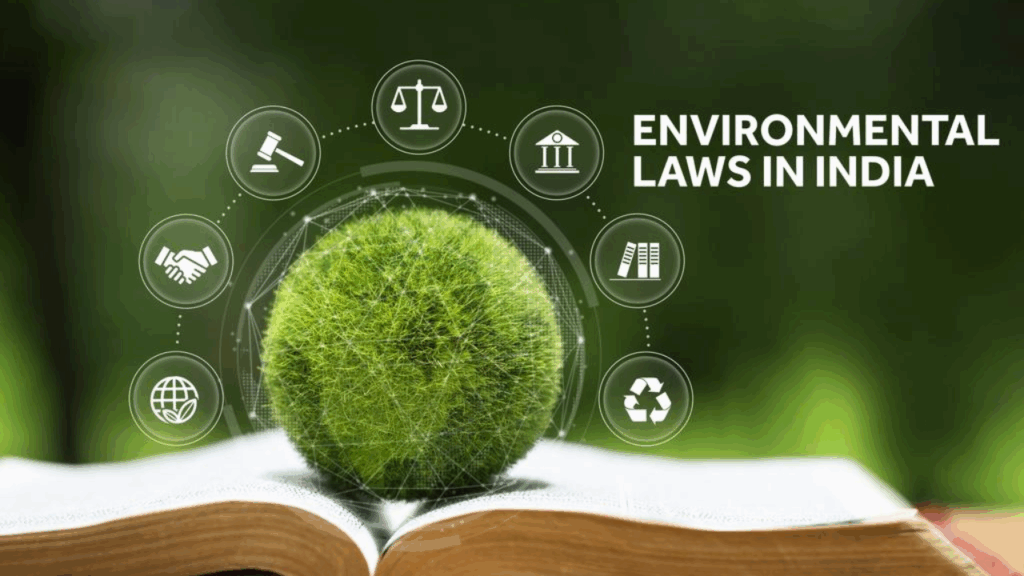
Environmental protection in India is not just a constitutional mandate but also an administrative necessity. As environmental issues became more complex with industrial growth, urbanization, and resource exploitation, the interplay between environmental law and administrative law emerged as a critical dimension of governance. While environmental law provides the substantive framework for protecting natural resources, administrative law ensures that regulatory authorities function fairly, transparently, and within their powers. Together, they form the backbone of India’s environmental governance system.
Understanding Environmental and Administrative Law
- Environmental Law refers to laws, rules, and regulations designed to safeguard the environment and ensure sustainable use of natural resources. Major examples include the Environment Protection Act, 1986, the Air Act, 1981, and the Water Act, 1974.
- Administrative Law governs the functioning of public authorities and ensures accountability, transparency, and adherence to principles of natural justice in decision-making. It covers delegated legislation, rule-making, administrative discretion, and judicial review of administrative actions.
The two areas overlap significantly in India, especially since environmental regulation is largely carried out by administrative bodies.
Points of Interconnection Between Environmental and Administrative Law
- Delegated Legislation
- Most environmental laws empower regulatory authorities like the Central Pollution Control Board (CPCB) and State Pollution Control Boards (SPCBs) to frame rules, issue notifications, and set standards.
- This reliance on delegated legislation shows how environmental governance is rooted in administrative mechanisms.
- Administrative Discretion
- Agencies are vested with discretion to grant environmental clearances, impose penalties, and regulate industrial activities.
- Administrative law ensures that such discretion is exercised fairly and without arbitrariness.
- Environmental Impact Assessment (EIA)
- The EIA process is an administrative procedure requiring project proponents to seek prior clearance.
- Here, principles of administrative law—such as public participation and reasoned decision-making—become critical.
- Judicial Review
- Administrative actions taken under environmental laws are subject to judicial review. Courts intervene to ensure compliance with principles of natural justice, proportionality, and rule of law.
- Specialized Tribunals
- The National Green Tribunal (NGT) embodies the fusion of administrative and environmental law, as it exercises quasi-judicial powers to adjudicate disputes.
Role of Administrative Law in Environmental Governance
- Checks and Balances: Ensures that environmental regulators do not act arbitrarily.
- Transparency and Accountability: Mandates fair procedures in granting environmental clearances and approvals.
- Natural Justice: Upholds the right to be heard for affected communities.
- Judicial Remedies: Provides scope for judicial review of administrative decisions, thereby strengthening environmental protection.
Challenges in the Interplay
Despite the synergy between environmental and administrative law, challenges remain:
- Overlapping Jurisdictions: Multiple agencies with unclear roles create regulatory confusion.
- Weak Enforcement: Administrative bodies often lack resources to implement environmental norms effectively.
- Corruption and Discretion Misuse: Unchecked administrative discretion may lead to favoritism or non-compliance.
- Public Participation Issues: Though mandated, genuine community involvement in EIA hearings is often weak.
- Judicial Overload: Excessive reliance on courts for administrative shortcomings burdens the judiciary.
Case Studies Reflecting the Interplay
- MC Mehta v. Union of India (Ganga Pollution Case) – The Supreme Court directed authorities to regulate industrial effluents, showcasing judicial intervention in administrative enforcement of environmental laws.
- Vellore Citizens Welfare Forum v. Union of India – The Court emphasized the precautionary principle and polluter pays principle, influencing administrative agencies to adopt stricter measures.
- Lafarge Umiam Mining Case – The Court reviewed environmental clearances, ensuring administrative decisions aligned with environmental law.
- Sterlite Industries Case – The NGT and courts ensured administrative accountability in permitting and regulating industries.
Way Forward
To strengthen the interplay of environmental and administrative law in India, the following measures are essential:
- Capacity Building of regulatory agencies for effective enforcement.
- Clarity in Roles to reduce overlap between ministries, boards, and tribunals.
- Strengthening Public Participation in environmental decision-making.
- Independent Audits of administrative decisions and clearances.
- Digital Transparency through online databases on clearances, pollution levels, and corporate compliance.
Overview Table
| Aspect | Environmental Law Dimension | Administrative Law Dimension |
|---|---|---|
| Delegated Legislation | EPA 1986, Air Act, Water Act | Rules framed by CPCB, SPCBs |
| Administrative Discretion | Granting clearances, imposing penalties | Must follow fairness and non-arbitrariness |
| Public Participation | EIA hearings, consultations | Principle of natural justice |
| Judicial Review | SC/HCs and NGT reviewing environmental cases | Ensures accountability of authorities |
| Specialized Institutions | NGT, CPCB, SPCBs | Quasi-judicial and regulatory functions |
| Challenges | Weak enforcement, overlapping jurisdictions | Corruption, lack of transparency |
FAQs
Q1. How are environmental and administrative law connected in India?
They intersect as environmental governance relies heavily on administrative decision-making, rule-making, and regulatory enforcement.
Q2. What role does judicial review play in this interplay?
It ensures administrative decisions under environmental laws are fair, reasonable, and aligned with constitutional principles.
Q3. Why is public participation important in environmental administration?
It upholds transparency, ensures accountability, and strengthens community involvement in safeguarding the environment.

